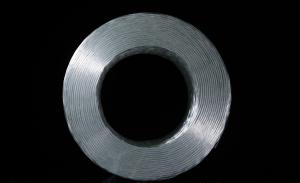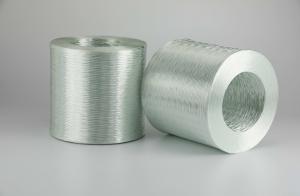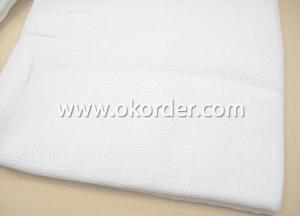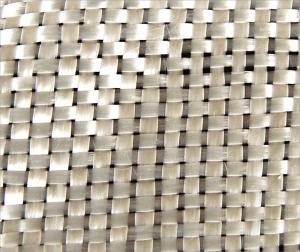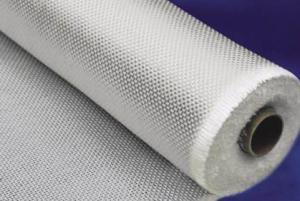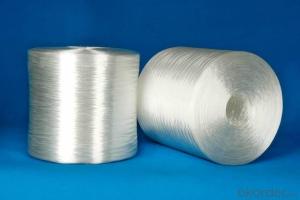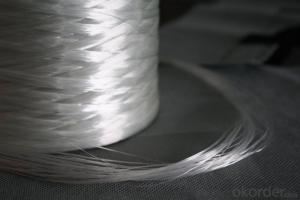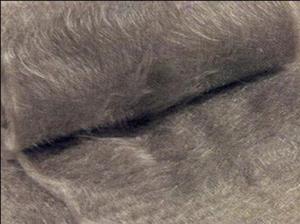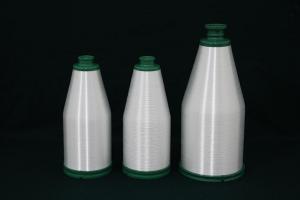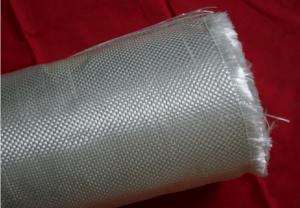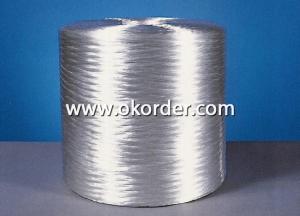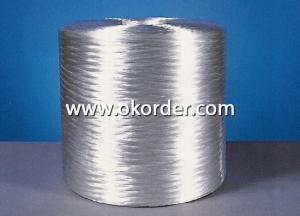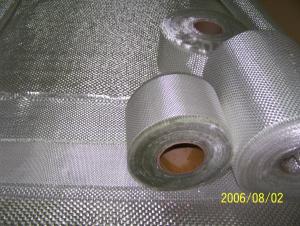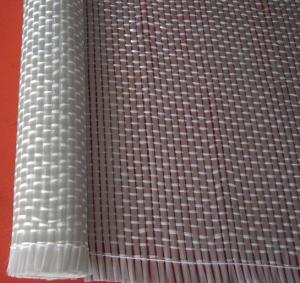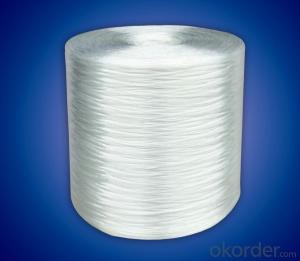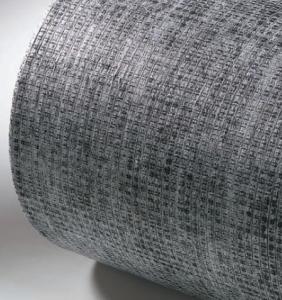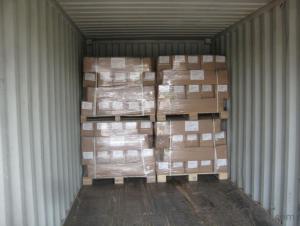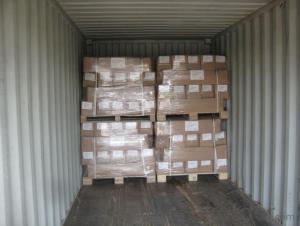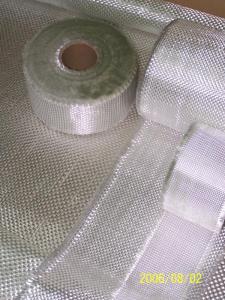Assembled Roving E Glass Fiber Spary Up Roving 180
- Loading Port:
- Shanghai
- Payment Terms:
- TT or LC
- Min Order Qty:
- 1000 kg
- Supply Capability:
- 10000000 kg/month
OKorder Service Pledge
OKorder Financial Service
You Might Also Like
Product Description:
180 Assembled Roving for Spray-up is coated with a silane-based sizing, compatible with unsaturated polyester, vinyl ester and polyurethane resins.
180 is a versatile general purpose spray-up roving used to manufacture boats, yachts, sanitary wares, swimming pools, automotive parts, and centrifugal casting pipes.
Product Features:
·Excellent choppability and dispersion
·Good anti-static property
·Excellent contact to mold surfaces and no rebound in small angle
·Fast and complete wet-out ensures easy roll-out and rapid air release.
·Excellent mechanical properties of composite parts
Technical Parameters:
Item | Linear density variation | Moisture content | Sizing content | Stiffness |
Unit | % | % | % | mm |
Test method | ISO 1889 | ISO 3344 | ISO 1887 | ISO 3375 |
Standard range | ± 4 | ≤ 0.07 | 1.00 ± 0.15 | 140 ± 20 |
Instructions:
·The product is best used within 12 months after production, and should be kept in the original package before use.
·Care should be taken when using the product to prevent it from being scratched or damaged.
·The temperature and humidity of the product should be conditioned to be close or equal to the ambient temperature and humidity before use, and the ambient temperature and humidity should be properly controlled during the use.
Packing:
Item | unit | Standard | |||
Typical packaging method | / | Packed on pallets. | |||
Typical package height | mm (in) | 260 (10.2) | |||
Package inner diameter | mm (in) | 100 (3.9) | |||
Typical package outer diameter | mm (in) | 280 (11.0) | 310 (12.2) | ||
Typical package weight | kg (lb) | 17.5 (37.5) | 23 (50.7) | ||
Number of layers | (layer) | 3 | 4 | 3 | 4 |
Number of packages per layer | (pcs) | 16 | 12 | ||
Number of packages per pallet | (pcs) | 48 | 64 | 36 | 48 |
Net weight per pallet | kg (lb) | 840 (1851.9) | 1120 (2469.2) | 828 (1825.4) | 1104 (2433.9) |
Pallet length | mm (in) | 1140 (44.9) | 1270 (50.0) | ||
Pallet width | mm (in) | 1140 (44.9) | 960 (37.8) | ||
Pallet height | mm (in) | 940 (37.0) | 1200 (47.2) | 940 (37.0) | 1200 (47.2) |
Storage:
Unless otherwise specified, the fiberglass products should be stored in a dry,cool and moisture-proof area.The best temperature and humidity should be maintained at -10℃~35℃ and ≤80% respectively. To ensure safety and avoid damage to the product, the pallets should be stacked not more than three layers high. When the pallets are stacked in two or three layers, special care should be taken to correctly and smoothly move the upper pallet.
- Q:What does fireproof bag used for ?
- The outer layer is made of glass fiber twistless roving and its inner layer is filled with special refractory, thermal insulation and expanding materials, which can expand in high temperature and solidified so as to form a sealing layer for the purpose of preventing fire spreading.
- Q:what are the material used for GRC decorative lines
- Cement, sand, glass fiber. We should pay attention to anti-cracking in interior decoration.
- Q:What are the main molding processing methods of plastics
- There are many methods of plastic forming. Six main forming methods are listed below: 1 injection molding and injection molding, extrusion molding. 2. extrusion molding, which is the main molding of thermoplastic plastic molding, 3 hollow blow molding, also known as the 4 compression molding also called compression molding. The upper and lower mold installation the template in the press on, the plastic material directly into the cavity, the mold is closed, full of plastic cavity in the heat and pressure, setting after plastic products. 5, injection molding and transfer molding. One of the main forming method is thermosetting plastics. It is feeding room, plastic pellets into mould in the heating, melting plastic under pressure through the pouring system of bottom mold transfer chamber fills the cavity, and then cure it. 6, solid molding molding plastics in melting temperature, in the molding process No obvious flow condition, for two times molding plastic sheet, such as vacuum molding, compression molding and air pressure molding, original for thin-walled parts molding, first used in the manufacture of thick wall parts. 7, other molding calendering, there are many casting plastic molding methods...
- Q:grc fiberglass
- the content of ZrO2 in alkali resistant glass fibre whcih was used as reinforced material for portland cement is not less than 16. According to specific provisions in the T841, it is clearly required that alkali-resistant glass fiber must be used in GRC with its type incledes twistless roving.
- Q:The difference between the BMC and DMC DMC?
- DMC is an ordinary premix molding compound with flame resistance and insulation. As continuously promotion, its social demand increases rapidly in United States. BMC has many different names.It mainly uses the polyester molding compound for production. Such great value and vitality of the new materials like BMC will play an increasingly important role in a wide range of areas. DMC is also known as the BMC. Although the development and application of BMC in China started late, it significantly promoted the industrial materials and technological progress. Because of their similar nature and process consistency, bulk molding compound such as DMC has the feature of leakage resistance and rigidity. especially the tensile strength of BMC which is based on unsaturated polyester. BMC refers to modified premix molding compound based on isophthalate polyester resin. With mass production and free coloring, it is irreplaceable for other raw materials. Bulk premix molding compund. In 1989, the development of everthing is inevitable.
- Q:What can be produced by waste flat glass.
- 1, It can used for producing asbestos cut strand. 2, It can be used for producing twistless roving. 3; It also can pull into a wire for producing glass fiber cloth. It is widely used.
- Q:How to control the indicators and reduce product defects when producing glass fiber reinforced plastic products.
- Resins require low viscosity and are easy to operate manually. (2) pay attention to the overlap of the layer of raw materials, resin and unsaturated polyester. Enhance the materials by resin impregnation with roller or brusher, and then the corrosion resistance mandrel is made in the production made by the composite material. (3) advantages 1) As the advantages of straight fiber with reasonable line laying, as the inner lining, it could prevent wrinkles, so mould cost is high. Although the composite products are usually single shell. Twistless roving is used to priduce tube tank. (4) Disadvantages (1) It belongs to the labour intensive production. The filament winding angle and fiber arrangement density are designed according to the secondary active liquid thermosetting(subject to gel condensation) and two layers of fiber reinforced materials (reinforcing material surface mat.) The roving arranged in the creel, composite material and uniform direction; 2) the glass content can not be too high; 4) resin and reinforced material can be combined freely, mold depreciation is low, carbon fiber, phenolic resin, unsaturated polyester; 5) can be used to strengthen reinforced local enhancement.
- Q:Knowledges of bamboo fiber.
- So it needs special equipment for processing, but because the bamboo fiber is very short, the most notable feature is the environmental protection and decontamination capability. At present, it is mainly used in textile products. There is an association of bamboo fiber, where phyllostachys pubescens (General requirements for three years) is soaked and peeled, almost like paper-making.
- Q:What is the function of adding fiber material to concrete ?
- In projects, some fiber materials such as paper, hemp fiber and straw are added to concrete. If plastering mortar is added into mixer, it can play the role of skeleton, improve the crack resistance and tensile strength of the plaster layer and enhance the flexibility of floated coat and durability in order to reduce floated coat contraction and make it not easy to fall. The characteristics of the fiber material will be introduced as follows: firstly, paper reinforcement includes dry and wet paper. Dry paper is use at the time of adding quick lime, It was tore up, was removed dust and soaked with water, and then 100 kg lime and 2.75 kg paper are mixed. When using, it should be made into powder by a small steel mill and 3 mm aperture sieve filter. When wet paper reinforcement (commonly known as pulp) was used, each 100 kg lime should be added into 2.9 kg wet paper reinforcement. Specific operation method is the same as that of dry paper. Secondly, the use of hemp fiber requires tenacity and purities. To make is loose, it need to be dried, linen and then it is cut into 20 mm to 30 mm. Each 100kg lime adds 1kg loose hemp which is hemp fiber grey. Thirdly, grass stalks are usually cut into rice straw or wheat straw which is no more than 30 mm long. It could be used after half a month after soaked in lime water. It also can be used as paper after soaked in lime or caustic soda. Fourthly, synthetic fiber mainly includes polypropylene fiber and nylon fiber used for mortar. When using, you should pay attention to its disparity and alkali resistance. These are the all material fiber used in concrete. You should be familiar with the characteristics of the material in order to make better use of it.
- Q:Can glass fiber be used for cement components
- Glass fiber is used as reinforced component is good. It features with weather resistance, acidproof and alkali resistant.
1. Manufacturer Overview |
|
|---|---|
| Location | |
| Year Established | |
| Annual Output Value | |
| Main Markets | |
| Company Certifications | |
2. Manufacturer Certificates |
|
|---|---|
| a) Certification Name | |
| Range | |
| Reference | |
| Validity Period | |
3. Manufacturer Capability |
|
|---|---|
| a)Trade Capacity | |
| Nearest Port | |
| Export Percentage | |
| No.of Employees in Trade Department | |
| Language Spoken: | |
| b)Factory Information | |
| Factory Size: | |
| No. of Production Lines | |
| Contract Manufacturing | |
| Product Price Range | |
Send your message to us
Assembled Roving E Glass Fiber Spary Up Roving 180
- Loading Port:
- Shanghai
- Payment Terms:
- TT or LC
- Min Order Qty:
- 1000 kg
- Supply Capability:
- 10000000 kg/month
OKorder Service Pledge
OKorder Financial Service
Similar products
New products
Hot products
Related keywords

